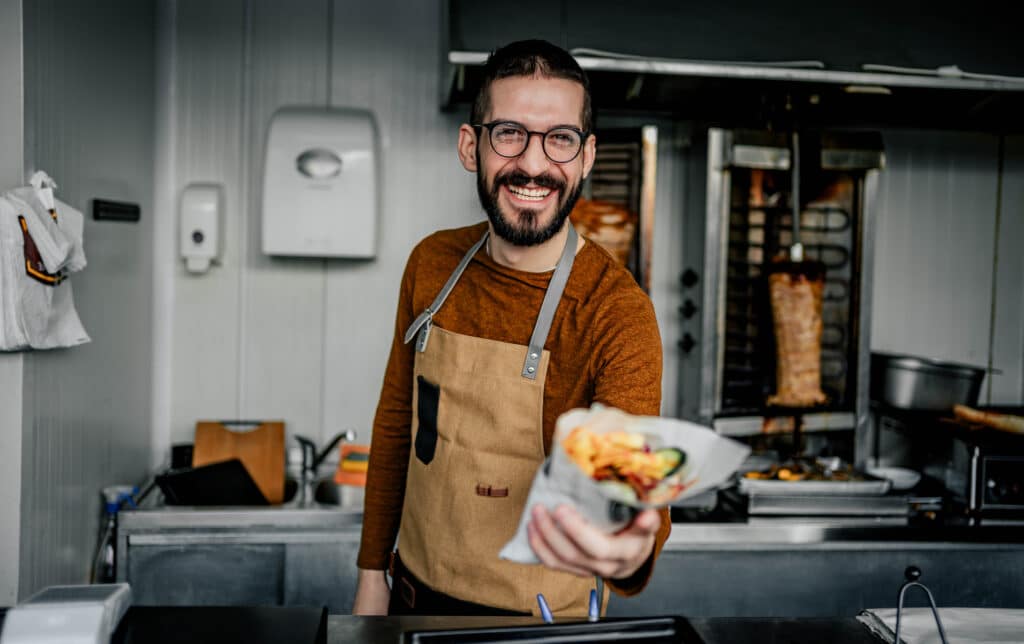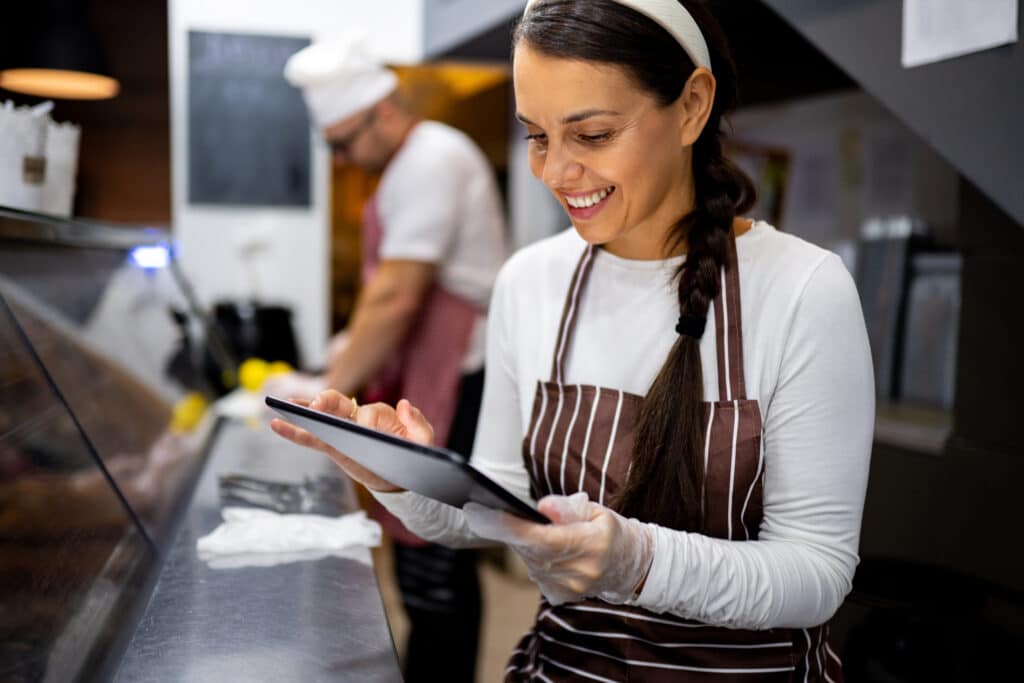Happy National Pi Day. In honor of our many pizzeria customers, we are sharing a few pizzeria-specific ideas on how to increase profitability.
Menu engineering definition = balancing your menu items’ popularity and profits in order to drive customers to the menu items you want them to buy to increase profits.
Did you know that your menu is one of the most effective tools you have available for business success? An average customer spends a mere 109 seconds total looking at a menu. And, on average, 80% of a restaurants’ food sales come from only 20% of menu items. These two data points prove that it is critical to your bottom line to make sure your menu’s layout and overall design are all influencing diners to order the dishes that yield the best results for your pizzeria.
Just consider your own dining habits. When you go to your favorite restaurant do you always order the same thing? Have you ever tried another dish there? Do you know what influences your decision to order that item?
There are many advantages of menu engineering. The right design can go a long way to affect customers’ buying decisions, as well as increasing your profitability. When correctly arranged, a great pizza menu works as a silent salesperson, doing most of the heavy lifting for you.
Here are five menu engineering tips that will maximize the money-making potential of your menu:
Stick to the magical number 7
Each menu section should contain no more than seven items. Featuring more than the “magic seven” creates a so-called “paradox of choice” for guests, which tends to increase the anxiety customers feel to make a choice, leading them to feel overwhelmed or confused. As a result, many will simply default to ordering an item they’ve had before to be safe, which means that you could be missing out on the sales of your most profitable menu items.
Influence buying decisions with color
It’s been proven that customers are driven subconsciously by what they see. In fact, colors can sometimes even speak louder than words, so the careful use (and sometimes even outright avoidance) of certain colors on your pizza menu can be essential in driving purchase decisions.
Here are how different primary colors can impact diners’ emotions:
- Red — This is the color of action and passion, so limited use of red can motivate customers to order an associated item.
- Orange — This appetite-stimulating color can be ideal in encouraging impulse in menu item selection.
- Yellow — This color of “Yield” signs and traffic “caution” lights is an attention-getter that makes us feel happy, so when it is used legibly (watch out for light shades and avoid yellow completely in dimly lit restaurants) it can be an excellent way to capture diner attention.
- Green — This “freshness” color can increase the appeal of salads and seasonal menu options.
- Blue — Unless your pizza brand has a very strong connection with seafood, this hue can make guests feel tired, so limit its use.
Trust the power of placement
When looking at a standard two- or three-fold menu, studies show that our eyes typically move in a triangular motion. They start in the middle of a page, then move to the top right, then top left in what is referred to as the “Golden Triangle.”
Most of the time is spent looking at the top portion of the menu. For this reason, pacing menu items that rate highly in the menu engineering matrix at the center and upper-right corner of your menu will increase the sales of these items. The most popular and profitable items on your menu are known as a star in menu engineering. A menu analysis will identify the stars on your menu. Be sure that they are in a highly visible area of the menu.
The puzzle in menu engineering is the menu items that are not very popular but ARE very profitable. The goal is to make these profitable items more popular, so placing them in the “Golden Triangle” is also a great choice.
Take advantage of negative space
If a menu is crammed-full of text, customers’ eyes will naturally be drawn to any open spaces. As a result, brands can increase the likelihood that their most profitable menu items will get ordered by creating that “negative space” around those items.
That simple action can automatically boost orders, and as a result, sales of your pizzeria’s most profitable items. And on that note, while photos do help sell certain dishes, they should be used wisely and sparingly. Typically, the use of one picture per menu page can increase sales of that item up to 30%.
Plant a decoy
Box your higher-end offerings right below some lower-priced fare that may be lower in purchase price but has a higher margin than those higher-end dishes. By doing this simple action, guests who order the more economical fare feel like they’ve found a deal and your brand racks up a more profitable sale.
Conclusion
Finally, remember to take time to train staff on the importance of menu engineering so that they understand which items are priorities. The application of menu engineering will guide customers to more profitable dishes to improve customer experience while boosting your bottom line.
Are you ready to take control of your cheese costs? Curious about your profitability per pizza type? Dreaming of being able to forecast exactly how much dough the kitchen needs to prep for each night based on trends? Are you looking for a pizza restaurant management solution to simplify your life? The use of restaurant analytics to help you get a detailed look at your profitability is one of the key elements of a successful restaurant. It drives strategic decisions regarding operations to improve your bottom line.
Restaurant365 is an all-in-one restaurant management system incorporating reporting tools, restaurant accounting software, restaurant operations software, inventory management software, payroll + HR software, and scheduling software into a cloud-based platform that’s fully integrated with your POS system, as well as to your food and beverage vendors, and bank.



